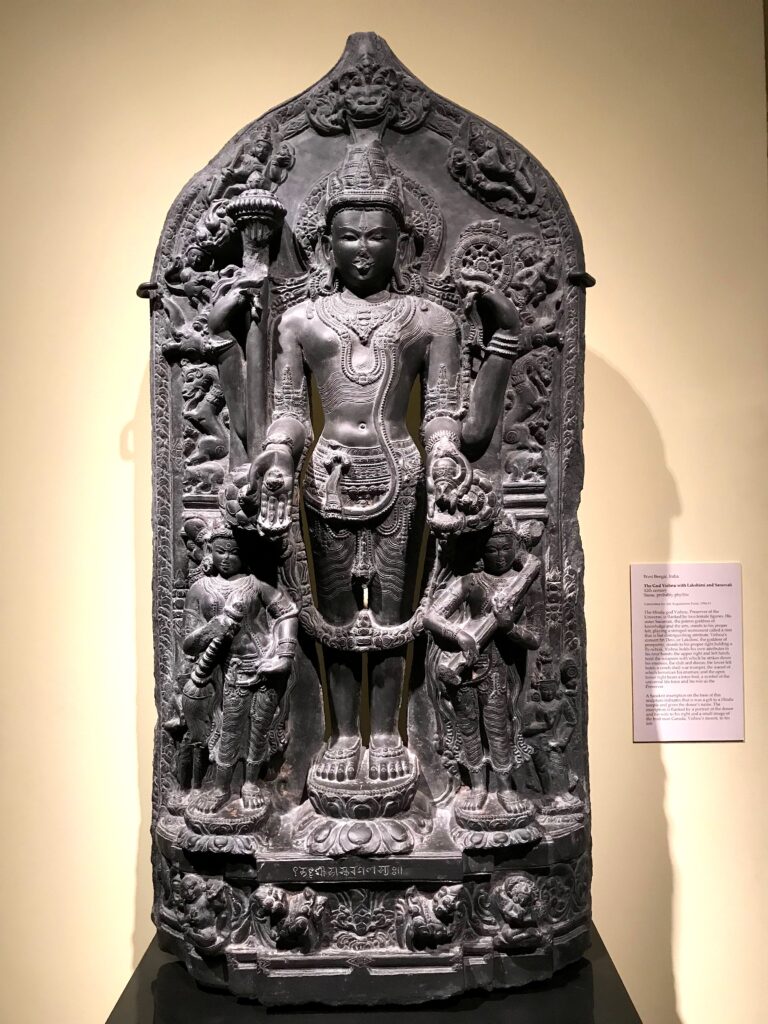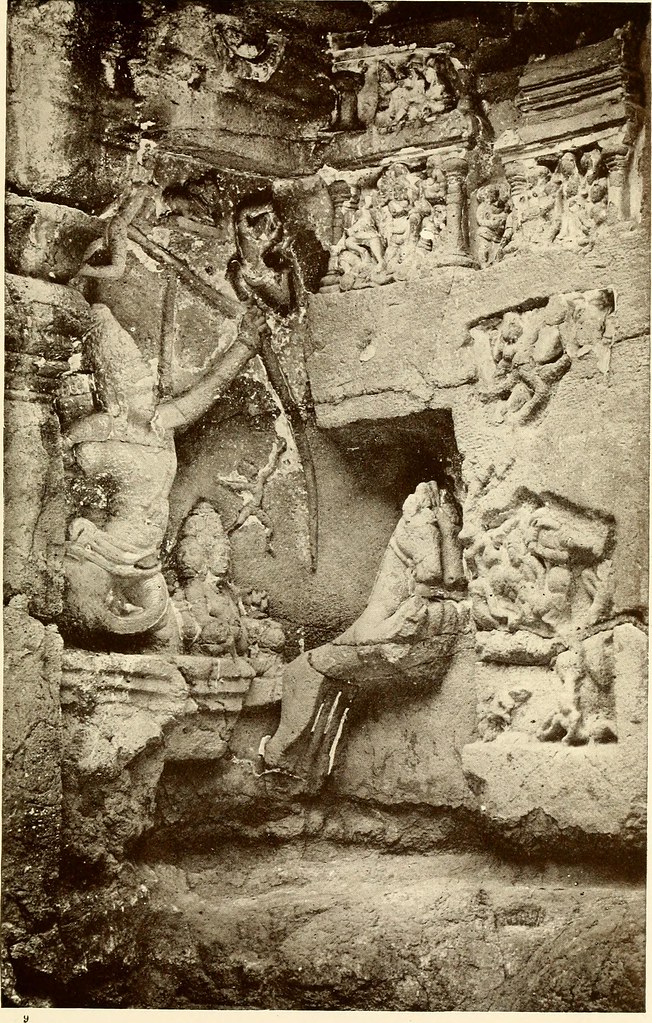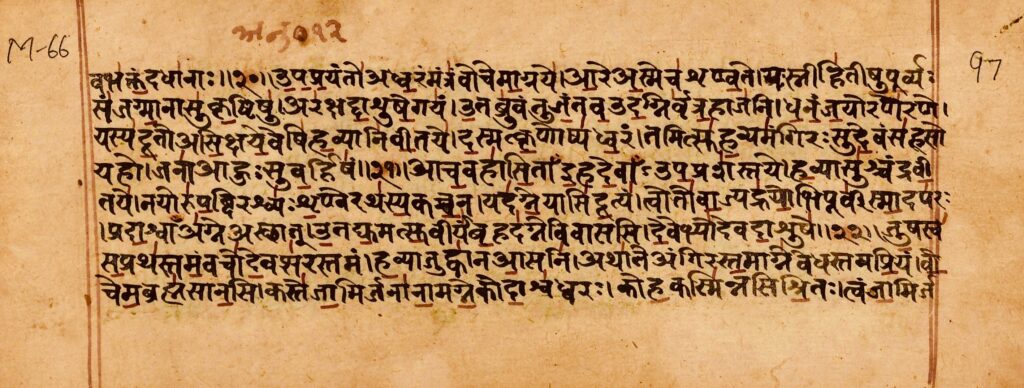Rigveda: Unraveling Enigmatic Journey into Ancient Wisdom
The Rigveda is one of the earliest texts in human history, providing information on the spiritual and cultural aspects of ancient India. Written in Sanskrit over 3,000 years ago, its songs are not just historical relics but enduring stores of knowledge, providing a deep understanding of ancient Indian culture, religion and philosophy. Let us embark on a journey to discover the significance of Rigveda and know its enduring significance.

Origins and Composition:
Acclaimed as the oldest of the Vedas, the Rig Veda is a treasure trove of ancient Indian spiritual and cultural ethos expressed through its lyrical hymns, mantras and mantras. The Rigveda is said to have been written more than three thousand years ago, and the sage Vyasa is traditionally associated with its contents. This religious text, spread over ten volumes called Mandal, contains a total of 1,028 songs.
The history of the oral transmission of the Rigveda is particularly interesting. Generations of priests and intellectuals committed the hymns to memory and reproduced them verbatim before they were written down. These sacred verses were preserved through oral tradition, which also served as evidence of their devotion and value.
Imagine the period when these songs echoed in the forests and valleys of the old Indian subcontinent, handed down from elder to munshi and kept alive only by the bonds of faith and memory. As it carried on the spiritual heritage of the Vedic tradition, each recitation was more than just memorizing words.
These hymns were written long after the Vedic civilization had developed. Academics who saw the value in preserving this old knowledge painstakingly compiled it. In this way, the Rigveda became a religious text from an oral tradition that would continue for ages.
The importance of the Rigveda in shaping the cultural and spiritual environment of ancient India can be better understood by delving deeper into the history of its circulation. Its enduring teachings continue to amaze students and researchers today, and it stands as a monument to the early Vedic community’s deep respect for intelligence and wisdom.
Spiritual Significance:
The spirituality of the Rig Veda is evident in every verse, providing insight into the ancient Indo-Aryan perspective on life and their deep respect for the cosmos.
At the center of the Rig Vedic hymns are several deities who personify and control various parts of life. Living beings endowed with divine qualities and powers, these gods are more than just ideas. One such deity is Agni, the god of fire, who represents both the physical fire and the spiritual fire that gives birth to all forms of ceremonies and life. Divine power, valor and cosmic harmony are all qualities associated with Indra, the god of thunder and rain. The sky god Varuna symbolizes cosmic order, truth and justice. Many cultures revere Surya, the Sun God, as the giver of all things bright and shining, thermal energy and life force.
Dedicated to these gods and goddesses, the hymns of the Rig Veda are poetic expressions of devotion and awe. They invite us into a sacred dialogue with the divine and cosmic forces, rather than merely admiring them. The ancient seers used the Rigvedic hymns as a medium to connect with the cosmic order and gain spiritual knowledge. They prayed for blessings for wealth, protection from evil and direction to righteousness.
Bhajan chanting was an integral part of the religious, symbolic, and transformational rituals and ceremonies of early Indo-Aryan peoples. It was thought that recitation could connect the divine with the earthly, allowing people to communicate with the gods and ask for their favor beyond the physical world.
The Rigveda takes us to a time when people looked at the universe with awe, respect and humility. It encourages us to see the sacred in ourselves and the environment around us by bringing to mind the interdependence of all living things and the eternal symphony of creation.

Literary and Linguistic Brilliance:
The literary and linguistic genius of the Rigveda is proof of the greatness of ancient Indian culture. The Rig Vedic hymns are all works of art with beautiful imagery, deep symbolism and complex verses.
Complex meter or rhyme is a defining feature of Rigvedic poetry. The rhythmic rhythm provided by swaras like Gayatri, Trishtubha and Anushtubha makes the songs easy to listen to, recite and remember. The Rig Vedic poets were masters of these verses, using them to create lyrical masterpieces that transported listeners to another world.
Furthermore, the Rig Vedic hymns are full of beautiful imagery that makes you think about the wonders and mysteries of nature. The poet creates symbolic and metaphorical images that ring true, from the thunder of Indra’s storms to the bright light of the flames of fire. He makes his poetry rich with metaphor and allegory, making the reader question the nature of reality.
The rich symbolism at the core of Rig Vedic poetry expresses deep truths that go beyond literal interpretations of words and gestures. The gods of the hymns are more than just human figures; they represent cosmic powers and eternal truth. Reflecting the interdependence of all things, the sun, moon, rivers, and mountains all have symbolic meaning in the natural world.
The Rigveda is a linguistic artifact from the early period of the Sanskrit language, when it was called Vedic Sanskrit. Vedic Sanskrit sheds light on the linguistic development of the Indian subcontinent through its unique phonetic and grammatical properties, which are equivalent to but otherwise distinct from classical Sanskrit. Researchers have been able to better understand the cultural and historical background of Sanskrit by tracing its roots and development through comparisons with other Indo-European languages.
The literary and linguistic complexity of the Rig Veda helps us better understand the creative and intellectual achievements of ancient Indian culture. This work is a living testimony to the influence that Vedic culture has had on poets, educationists and philosophers over the years.
Social and Cultural Insights:
The Rig Veda is an invaluable anthropological and historical artifact that sheds light on the economic, social and cultural processes of ancient Indian society.
Tribal communities are central to the depiction of civilization in the Rig Veda, which gives prominence to kinship and clan bonds. The hymns frequently mention tribal chieftains and other leaders, drawing attention to the importance of strong leadership and community governance. Furthermore, most Rig Vedic people lived off the land; raising livestock and crops was the mainstay of their economy. Because farming was so important to ancient Indian culture, the hymns are filled with imagery of planting, farming and harvesting.
The Rig Veda also sheds light on pre-modern ideas of social strata that were prevalent in ancient Indian culture. The hymns reference several social classes, including priests (Brahmins), warriors (Kshatriyas), and artisans (Vaisyas), which may indicate a hierarchical social structure. An important part of the priest’s work was to perform the ceremonies and rituals that were necessary to keep the universe in harmony and keep society prosperous. In contrast, warriors were tasked with protecting the tribe from external threats and defending itself. The economy depended heavily on the skill and workmanship of artisans and craftsmen.
Furthermore, the Rig Veda’s emphasis on rituals and ceremonies as important social and economic activities reflects the interdependence of religion, society, and economy. The world-famous Ashvamedha was a religious ritual that also served as a political and economic event, representing the power and authority of chieftains and kings.
The cultural and economic forces that created the early civilization can be better understood by analyzing the depiction of ancient Indian culture in the Rig Veda. It reflects both the diverse range of human experiences and the lasting impact of the efforts of our ancestors.
Philosophical Underpinnings:
Many important ideas that would eventually form the basis of Hindu philosophy have their origins in the Rig Veda, which is often praised for its deep spiritual and philosophical insights. The songs delve deeply into the interconnectedness of questions of life, humanity and the search for truth.
Rita, meaning “cosmic order” or “underlying principle that governs the universe,” is one of the central philosophical ideas of the Rig Veda. Rita personifies the concept of balance and harmony on a global scale, highlighting the interdependence of all things. To follow Rita, it is necessary to seek truth and righteousness in everything one does, as well as to harmonize one’s life with this cosmic order.
Samsara, the recurrence of all causes and effects, is another important idea explained in the Rig Veda. The concept of rebirth is a part of Samsara, the law of karma that governs the eternal cycle of life and death. As they go through countless lifetimes, souls evolve spiritually by learning from their mistakes and expanding their awareness.
Furthermore, moksha, the supreme liberation or liberation from the cycle of samsara, is indicated in the Rigveda. Attaining moksha, or union with the divine, is the pinnacle of spiritual attainment. It means rising above the constraints of this material world. The journey to freedom from ignorance and suffering, the pinnacle of spiritual enlightenment and self-realization, ends there.
Indian spirituality is a rich tapestry, and the intellectual threads woven within the Rig Veda will continue to grow and change over time. Later Vedic writings, such as the Upanishads, and Hindu intellectual traditions, such as Vedanta, Yoga and Samkhya, would give voice to these ideas. In the end, the Rig Veda is a wealth of knowledge that anyone who is curious about life’s deeper mysteries and the never-ending search for enlightenment can access.

Legacy and Influence:
The influence of the Rigveda on Indian culture and society has been continuous throughout history and shows no signs of waning. Its knowledge has been imprinted in the collective memory of the Indian subcontinent through numerous artistic expressions, philosophical discussions, religious rites and academic controversies.
A major expression of the influence of the Rigveda can be seen in its influence on religious activities. The hymns of the Rig Veda, which specify the precise rules and protocols for priests to follow when performing rituals and sacrifices, serve as the foundation for the Vedic ritual system. Hindu rituals, including marriages, fire offerings (homa), and ceremonies honoring deities (puja), still incorporate parts of the Vedic ritual.
Also, the philosophical ideas presented in the Rigveda have had a significant impact on the development of Indian philosophy generally. Various schools of thought within Jainism, Buddhism, and Hinduism can trace their philosophical roots to the investigation of basic ideas including the nature of reality, the human predicament, and the search for spiritual liberation. Contemporary discussions on ethics, metaphysics and spirituality still resonate with the philosophical issues expressed in the Rig Veda.
Two other fields that the Rigveda has influenced are art and literature, in addition to religion and philosophy. Many poets, musicians and artists have drawn inspiration from its complex rhymes and vividly described verses. Classical Indian literature, music, dance and visual arts often integrate Rig Vedic themes and symbols, adding to the rich cultural fabric of the subcontinent.
Academics from all walks of life continue to study the Rig Veda, debating its philosophical, historical and linguistic aspects. Academics around the world continue to draw attention to the Rigvedic hymns in the hope of learning more about the religion, culture, and society of ancient India.
In short, the deep knowledge contained in the Rig Veda has always influenced Indian culture, inspiring respect, curiosity and innovation. Its teachings, which also serve to remind humanity of the great mysteries of existence and the never-ending search for truth and enlightenment, illuminate the path of spiritual seekers and scholars.

Conclusion:
A treasure trove of spirituality, cultural history, and enduring wisdom awaits us as we explore the Rigveda, which is much more than just an old book. Inviting us to contemplate the deeper mysteries of life and find significance in the eternal waltz of creation, its lines resonate across the ages, connecting the past with the present. By delving deeply into the teachings of the Rigveda, one can experience a profound exploration of both the past and the human soul.
Table of Contents
Related Posts-
Stardew Valley Ancient Seed : Cultivating Magic
Stardew Valley Ancient Seed : Cultivating Magic
Urumi Sword : Exploring the Mystique
Urumi Sword : Exploring the Mystique